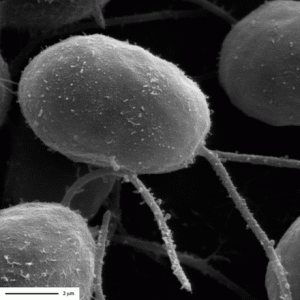How nonequilibrium thermodynamics speaks to the mystery of life
 In his 1944 book What is Life?, Austrian physicist Erwin Schrödinger argued that organisms stay alive precisely by staving off equilibrium. “How does the living organism avoid decay?” he asks. “The obvious answer is: By eating, drinking, breathing and (in the case of plants) assimilating. The technical term is metabolism.”
In his 1944 book What is Life?, Austrian physicist Erwin Schrödinger argued that organisms stay alive precisely by staving off equilibrium. “How does the living organism avoid decay?” he asks. “The obvious answer is: By eating, drinking, breathing and (in the case of plants) assimilating. The technical term is metabolism.”
However, the second law of thermodynamics, and the tendency for an isolated system to increase in entropy, or disorder, comes into play. Schrödinger wrote that the very act of living is the perpetual effort to stave off disorder for as long as we can manage; his examples show how living things do that at the macroscopic level by taking in free energy from the environment. For example, people release heat into their surroundings but avoid running out of energy by consuming food. The ultimate source of “negative entropy” on Earth, wrote Schrödinger, is the Sun.
Recent studies suggest something similar is happening at the microscopic level as well, as many cellular processes—ranging from gene transcription to intracellular transport—have underlying nonequilibrium drivers.
Indeed, physicists have found that nonequilibrium systems surround us. “Most of the world around us is in this situation,” says theoretical physicist Michael Cross at the California Institute of Technology, in Pasadena. Cross is among many theorists who spent decades chasing a general theory of nonequilibrium systems, and he says interesting things happen when systems remain out of equilibrium. “One of the biggest surprises is that driving a system far from equilibrium doesn’t just lead to turbulence. It leads to structure, and the most fascinating one is life.”
Read more at PNAS, here.